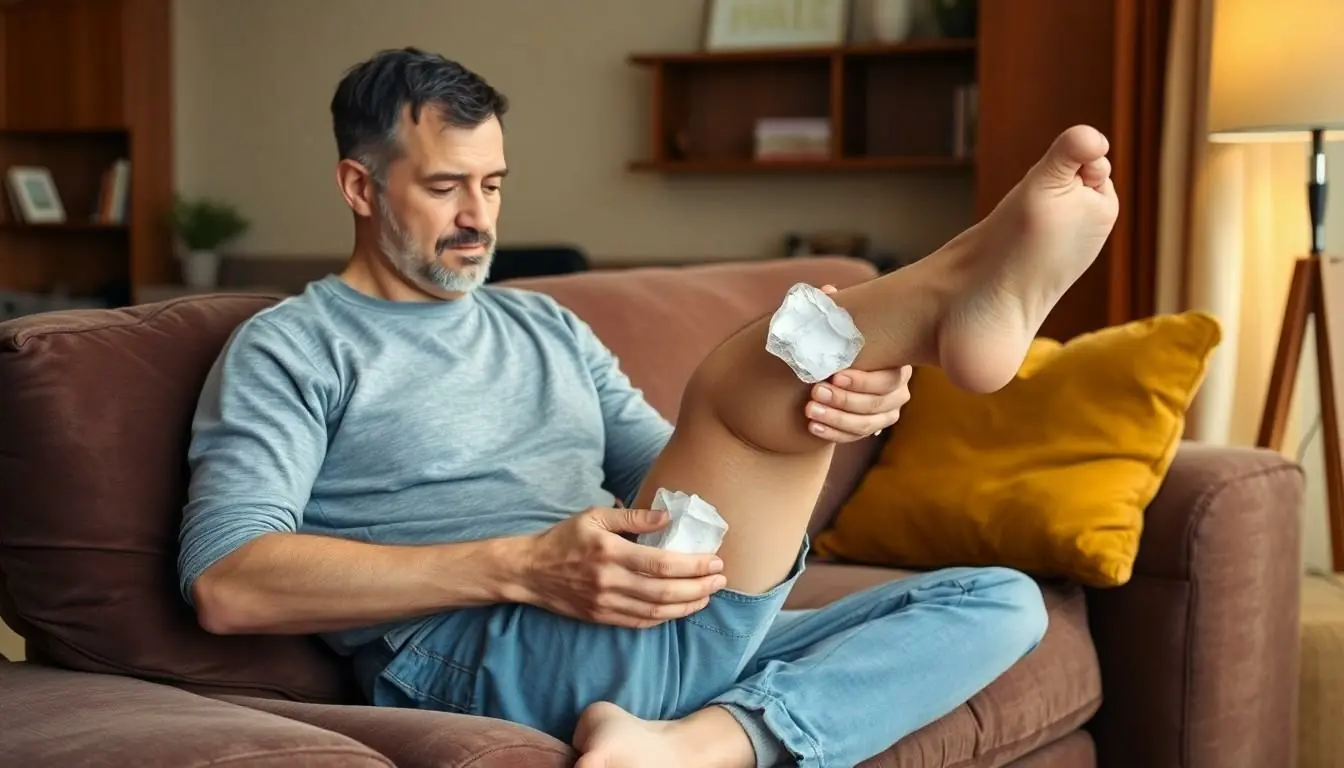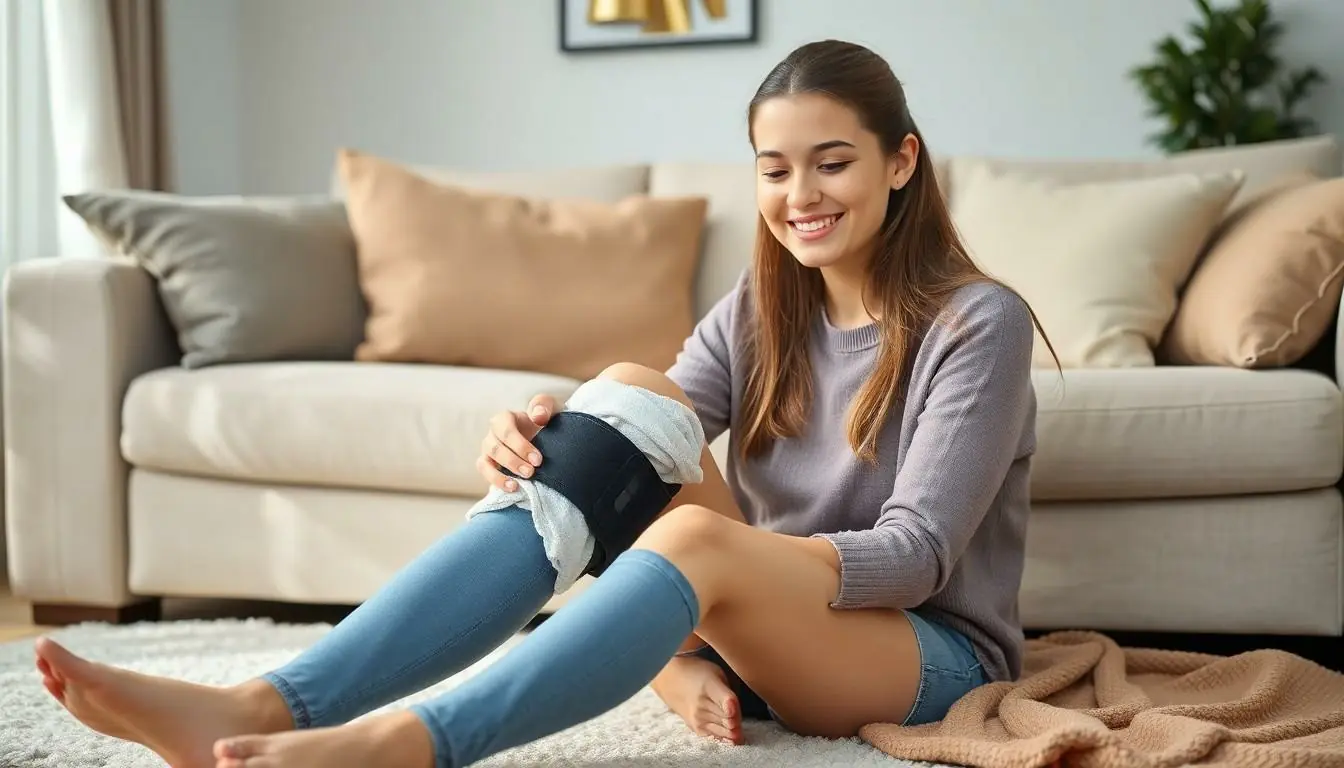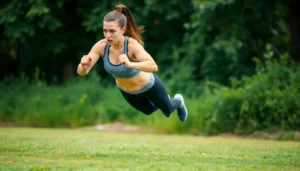Table of Contents
ToggleA sprained knee can feel like a cruel joke played by the universe, especially when all you wanted was to show off those new dance moves or sprint after the ice cream truck. But don’t let a twist or turn put you on the sidelines! With the right self-care strategies, recovery can be as smooth as your favorite ice cream flavor.
Understanding Sprained Knee Injuries
A sprained knee can significantly impact movement and activities. Understanding the injury types and their symptoms helps in proper self-care and faster recovery.
Types of Knee Sprains
Knee sprains fall into three categories based on severity. Grade I involves slight stretching or microscopic tears in ligament fibers. Grade II indicates partial ligament tears, leading to some instability. Grade III features complete tears, resulting in significant knee instability and often requiring medical intervention.
Symptoms of a Sprained Knee
Common symptoms include pain, swelling, and difficulty bearing weight. Bruising often appears, indicating blood accumulation around the joint. Stiffness may limit movement, while a popping sound can occur during injury. They often feel warmth around the knee area, signaling inflammation. Identifying these symptoms early aids in appropriate treatment and recovery.
Immediate Self-Care Steps

Addressing a sprained knee promptly can significantly enhance recovery. Implementing appropriate self-care measures ensures the best outcome.
R.I.C.E. Method
Resting the affected knee is crucial for healing. Ice should be applied in intervals of 15-20 minutes every few hours to reduce swelling. Compression with an elastic bandage helps manage swelling and provides support. Elevating the knee above heart level minimizes swelling and promotes blood circulation. Following these R.I.C.E. steps can alleviate symptoms effectively and speed up the recovery process.
Pain Management Techniques
Over-the-counter medications, such as ibuprofen and acetaminophen, can alleviate pain and reduce inflammation. Applying topical pain relief creams offers localized comfort. Gentle stretching and strengthening exercises support joint flexibility and stability during recovery. Using a knee brace might provide additional support while walking or engaging in daily activities. Staying within comfort limits when resuming activities ensures further injury prevention.
Long-Term Self-Care Strategies
Long-term self-care strategies play a crucial role in recovering from a sprained knee. Implementing appropriate exercises and stretching techniques enhances overall joint health.
Strengthening Exercises
Strengthening exercises significantly improve the stability of the knee. Engage in activities that target the quadriceps, hamstrings, and calves. Include exercises like straight leg raises, wall sits, and calf raises for effective results. Gradually increase resistance by using resistance bands or weights. Focus on low-impact movements to reduce strain on the knee while promoting muscle growth. Consistently performing these exercises helps build endurance and reduces the risk of re-injury.
Flexibility and Stretching
Flexibility exercises are essential for maintaining a healthy range of motion in the knee. Integrate dynamic stretches before physical activities, such as leg swings and gentle lunges. After workouts, include static stretches targeting the hamstrings, quadriceps, and calves to promote flexibility. Hold each stretch for at least 15-30 seconds to maximize benefits. Practicing yoga can further enhance flexibility and balance while providing relaxation. Regular stretching routines help prevent stiffness and support long-term recovery, ensuring a smoother return to desired activities.
When to Seek Professional Help
Recognizing when to consult a healthcare professional is crucial for effective treatment of a sprained knee. Certain symptoms indicate the need for immediate evaluation to avoid complications.
Signs of Severe Injury
Severe symptoms may indicate a more serious injury. Persistent or increasing pain often suggests the need for evaluation. If swelling does not subside with self-care methods, it could signal a ligament tear. Experiencing difficulty in bearing weight on the affected leg requires attention. Visible deformities in the knee or joint instability signal potential damage to ligaments. Lastly, accompanied symptoms like numbness or severe bruising should prompt a visit to a specialist.
Choosing the Right Specialist
Selecting the appropriate healthcare provider aids recovery. Orthopedic surgeons specialize in musculoskeletal injuries and provide tailored treatment plans. Sports medicine doctors focus on athletic-related issues and can guide rehabilitation efforts. Physical therapists offer expertise in recovery exercises to restore strength and flexibility. General practitioners can assess the injury and refer patients to specialists, ensuring comprehensive care and prompt recovery.
Recovering from a sprained knee requires a proactive approach to self-care. By implementing the R.I.C.E. method and incorporating gentle exercises, individuals can significantly enhance their healing process. Staying mindful of comfort levels when returning to activities is crucial to prevent re-injury.
Long-term strategies like strengthening and flexibility exercises play a vital role in maintaining knee health and stability. Recognizing when to seek professional help ensures that more serious injuries are not overlooked. With proper care and attention, a sprained knee doesn’t have to sideline anyone for long. Embracing these self-care techniques can lead to a smoother and more effective recovery journey.




